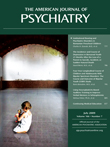Psychiatry, Third Edition
The third edition of Psychiatry is a monumental undertaking encapsulated in some 2700 pages—actually, hardly a capsule, but rather a huge enterprise in two equally huge volumes, which initially seemed to us daunting rather than inviting. However, this is a remarkable collection of work that covers a rapidly evolving field. We were excited when we first read the several well-written chapters on our primary interests. But we also found ourselves exploring other areas well beyond our special interests, and it proved to be satisfying to read massive amounts of information that is delivered in a relatively consistent format in each chapter. This book is particularly interesting in that it maintains the spirit of the biopsychosocial model, seemingly without bias, so that a full range of topics are covered, with innovative integration in some areas, as exemplified by the topic “Biological and Neuroimaging Studies of Psychotherapy” in chapter 18. This amalgamation of biology, psychology, and psychotherapy is a tribute to the editors and authors who assembled this comprehensive view of contemporary psychiatry.
Rather than opening with the glitz of modern psychiatry, Psychiatry begins with the heart of the field, “Approaches to the Patient.” This section includes discussions of the clinical examination, cultural factors in practice, general issues of patient care, and ethics. Section 2 provides a review of relevant issues in development across the lifespan. These foundations lead logically to what may be the crown jewel of this text, section 3, “Neuroscientific Foundations of Psychiatry,” by Eric Kandel and Jonathan Polan. This section includes erudite, yet highly readable, discussions of complex issues, among them genetics, animal models, scientific substrates of disorder, and even the neurobiology of psychotherapy. The scientific evidence presented in this section also provides fodder for the debate on the rational categorization of psychiatric illnesses that may be considered in future editions of DSM, such as the possibilities of new axes for genetic, environmental, and neural systems. In turn, this level of analysis may even lead to unexpected groupings of disorders into newer categories, spectrums, and dimensions of psychopathology. It is rare that a text begins with such a solid foundation based on emerging evidence.
This text gives careful attention to several possible approaches to psychopathology. While information for each disorder follows the DSM-IV classification, there are also approaches based on pathophysiology, such as “Consciousness, Orientation, and Memory,” “Alteration of Speech, Thought, Perception, and Self Experience,” and “Emotions.” There is also a relatively consistent content outline for most chapters. This not only helps with reading and referencing, but it also makes the book much more useable for the reader.
In a work of this size and scope, it would not be surprising to find some weaknesses. Regrettably, section 4, “Psychological and Social Scientific Foundations of Psychiatry,” pales in comparison to the neuroscience section that precedes it. And the editors’ attempts at equity occasionally lead to uneven coverage in chapters, so that some may be relatively longer than necessary for the knowledge base in that area while other rich areas seem unsatisfying and brief (e.g., “Hypnosis” and “Antipsychotic Drugs” are each covered in 30 pages). Additionally, while there is a generally rigorous attention to evidence-based approaches when available, this falls short in some areas (e.g., “Diagnostic Classification in Infancy and Early Childhood”). There are also some surprising combinations of topics in some of the child chapters that tend to weaken presentations (e.g., chapter 49: “Elimination Disorders and Childhood Anxiety Disorders,” and chapter 50: “Stereotyped Movement and Reactive Attachment Disorder”). We may be a bit biased in our observation that despite 10 chapters on child and adolescent disorders, there are limited discussions of conditions that are highly prevalent in childhood, especially mood and anxiety disorders; these are not adequately covered in either the child or adult sections.
Despite these few shortcomings Tasman et al. have produced an outstanding book in this third edition of Psychiatry . At a list price of $340 (less on discount websites), Psychiatry is not cheap, but in two volumes weighing about 7 kg, you get a lot for your money. Perhaps you would get even more with less if it were on a CD, thus making it more portable and searchable. Still, this is a fine textbook that will serve educators, at all levels, as a curriculum guide and teaching tool. For practitioners, it is a comprehensive reference that will find great use in any library.



